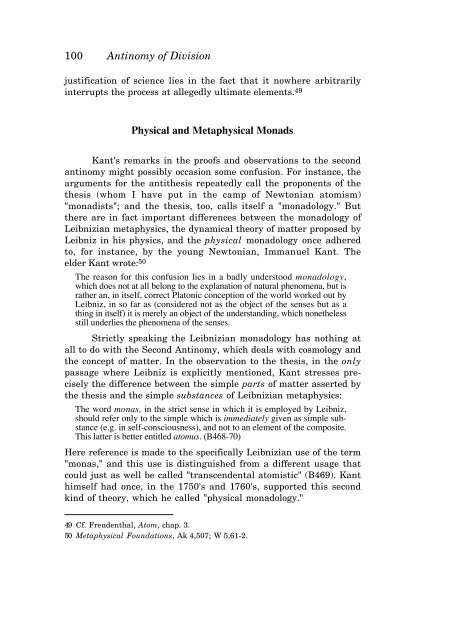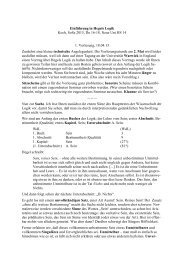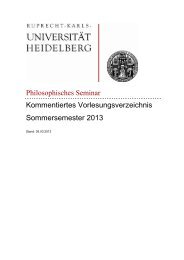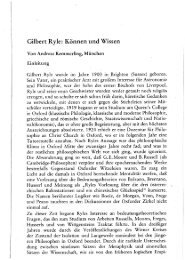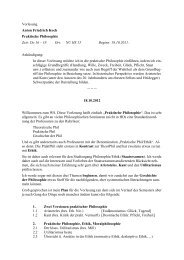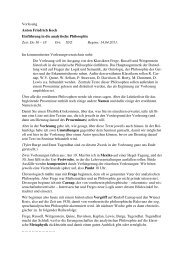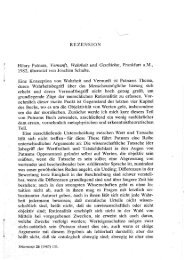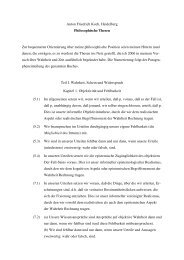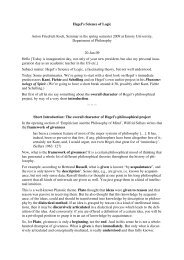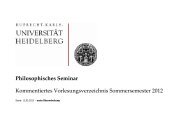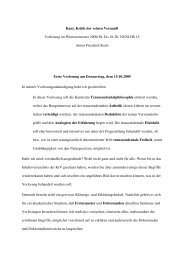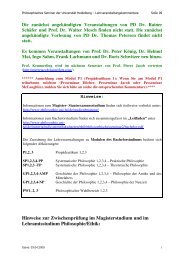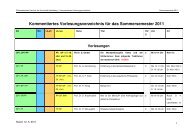KANT'S CRITIQUE OF TELEOLOGY IN BIOLOGICAL EXPLANATION
KANT'S CRITIQUE OF TELEOLOGY IN BIOLOGICAL EXPLANATION
KANT'S CRITIQUE OF TELEOLOGY IN BIOLOGICAL EXPLANATION
Create successful ePaper yourself
Turn your PDF publications into a flip-book with our unique Google optimized e-Paper software.
100 Antinomy of Division<br />
justification of science lies in the fact that it nowhere arbitrarily<br />
interrupts the process at allegedly ultimate elements. 49<br />
Physical and Metaphysical Monads<br />
Kant's remarks in the proofs and observations to the second<br />
antinomy might possibly occasion some confusion. For instance, the<br />
arguments for the antithesis repeatedly call the proponents of the<br />
thesis (whom I have put in the camp of Newtonian atomism)<br />
"monadists"; and the thesis, too, calls itself a "monadology." But<br />
there are in fact important differences between the monadology of<br />
Leibnizian metaphysics, the dynamical theory of matter proposed by<br />
Leibniz in his physics, and the physical monadology once adhered<br />
to, for instance, by the young Newtonian, Immanuel Kant. The<br />
elder Kant wrote: 50<br />
The reason for this confusion lies in a badly understood monadology,<br />
which does not at all belong to the explanation of natural phenomena, but is<br />
rather an, in itself, correct Platonic conception of the world worked out by<br />
Leibniz, in so far as (considered not as the object of the senses but as a<br />
thing in itself) it is merely an object of the understanding, which nonetheless<br />
still underlies the phenomena of the senses.<br />
Strictly speaking the Leibnizian monadology has nothing at<br />
all to do with the Second Antinomy, which deals with cosmology and<br />
the concept of matter. In the observation to the thesis, in the only<br />
passage where Leibniz is explicitly mentioned, Kant stresses precisely<br />
the difference between the simple parts of matter asserted by<br />
the thesis and the simple substances of Leibnizian metaphysics:<br />
The word monas, in the strict sense in which it is employed by Leibniz,<br />
should refer only to the simple which is immediately given as simple substance<br />
(e.g. in self-consciousness), and not to an element of the composite.<br />
This latter is better entitled atomus. (B468-70)<br />
Here reference is made to the specifically Leibnizian use of the term<br />
"monas," and this use is distinguished from a different usage that<br />
could just as well be called "transcendental atomistic" (B469). Kant<br />
himself had once, in the 1750's and 1760's, supported this second<br />
kind of theory, which he called "physical monadology."<br />
49 Cf. Freudenthal, Atom, chap. 3.<br />
50 Metaphysical Foundations, Ak 4,507; W 5,61-2.


